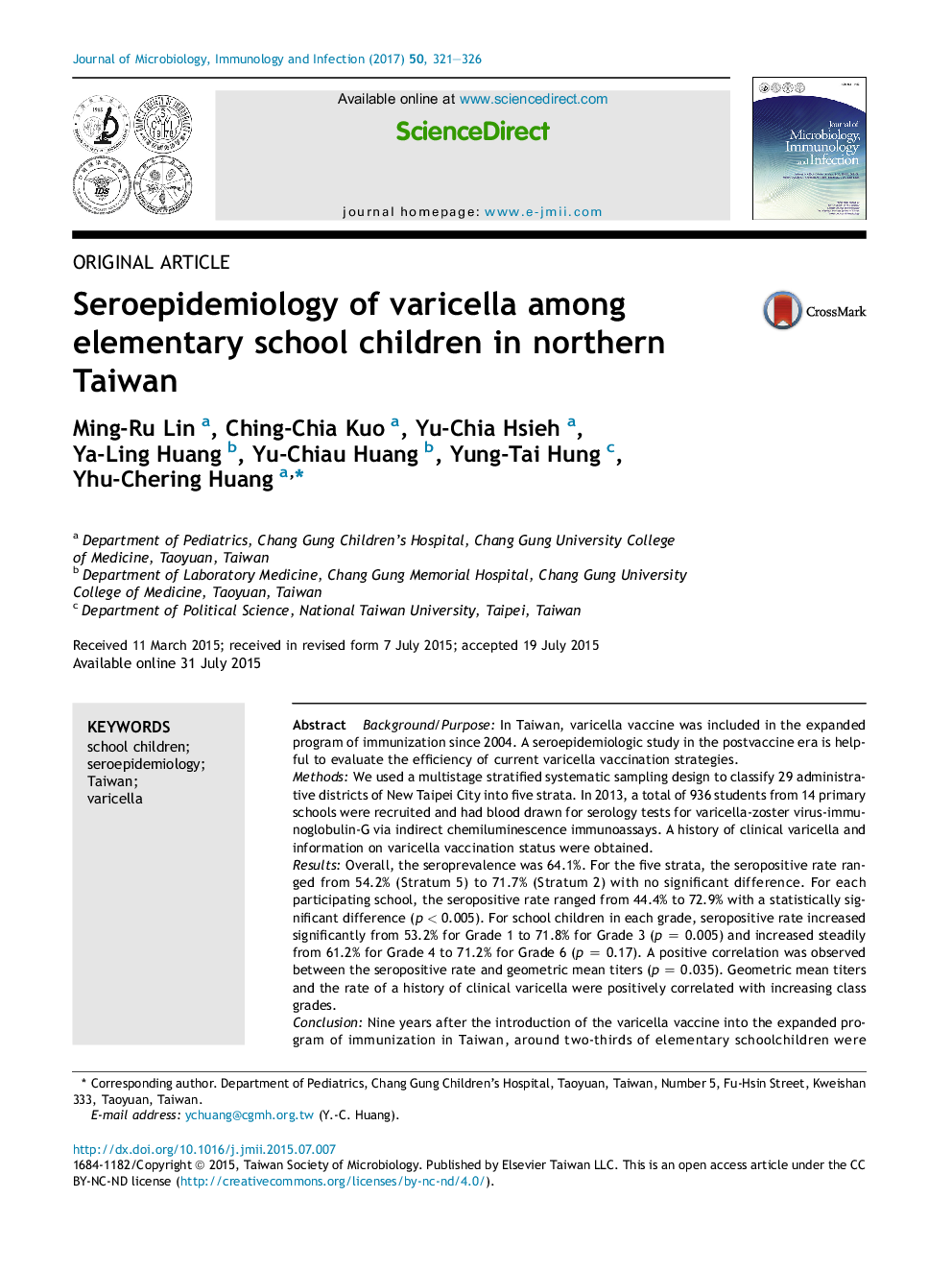| Article ID | Journal | Published Year | Pages | File Type |
|---|---|---|---|---|
| 5669022 | Journal of Microbiology, Immunology and Infection | 2017 | 6 Pages |
Background/PurposeIn Taiwan, varicella vaccine was included in the expanded program of immunization since 2004. A seroepidemiologic study in the postvaccine era is helpful to evaluate the efficiency of current varicella vaccination strategies.MethodsWe used a multistage stratified systematic sampling design to classify 29 administrative districts of New Taipei City into five strata. In 2013, a total of 936 students from 14 primary schools were recruited and had blood drawn for serology tests for varicella-zoster virus-immunoglobulin-G via indirect chemiluminescence immunoassays. A history of clinical varicella and information on varicella vaccination status were obtained.ResultsOverall, the seroprevalence was 64.1%. For the five strata, the seropositive rate ranged from 54.2% (Stratum 5) to 71.7% (Stratum 2) with no significant difference. For each participating school, the seropositive rate ranged from 44.4% to 72.9% with a statistically significant difference (p < 0.005). For school children in each grade, seropositive rate increased significantly from 53.2% for Grade 1 to 71.8% for Grade 3 (p = 0.005) and increased steadily from 61.2% for Grade 4 to 71.2% for Grade 6 (p = 0.17). A positive correlation was observed between the seropositive rate and geometric mean titers (p = 0.035). Geometric mean titers and the rate of a history of clinical varicella were positively correlated with increasing class grades.ConclusionNine years after the introduction of the varicella vaccine into the expanded program of immunization in Taiwan, around two-thirds of elementary schoolchildren were seropositive for varicella-zoster virus. Further surveillance studies on clinical varicella cases are worthwhile to determine whether a second dose of varicella vaccine is needed in Taiwan.
